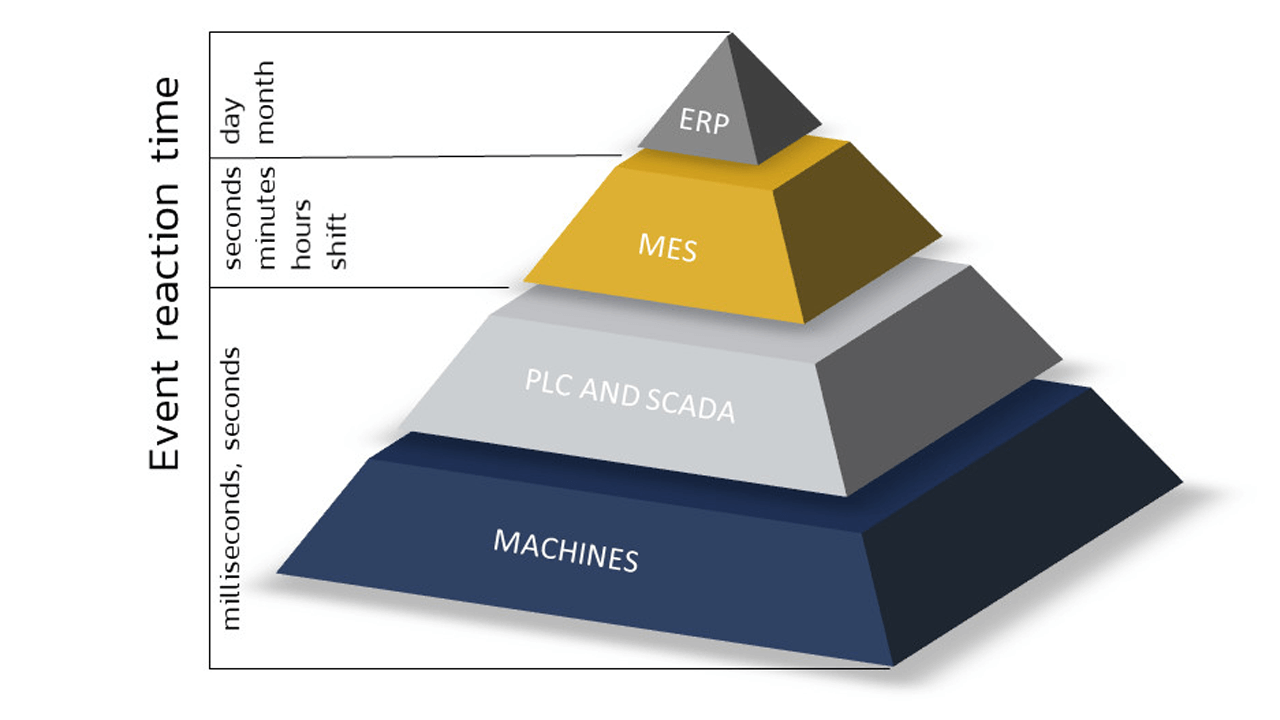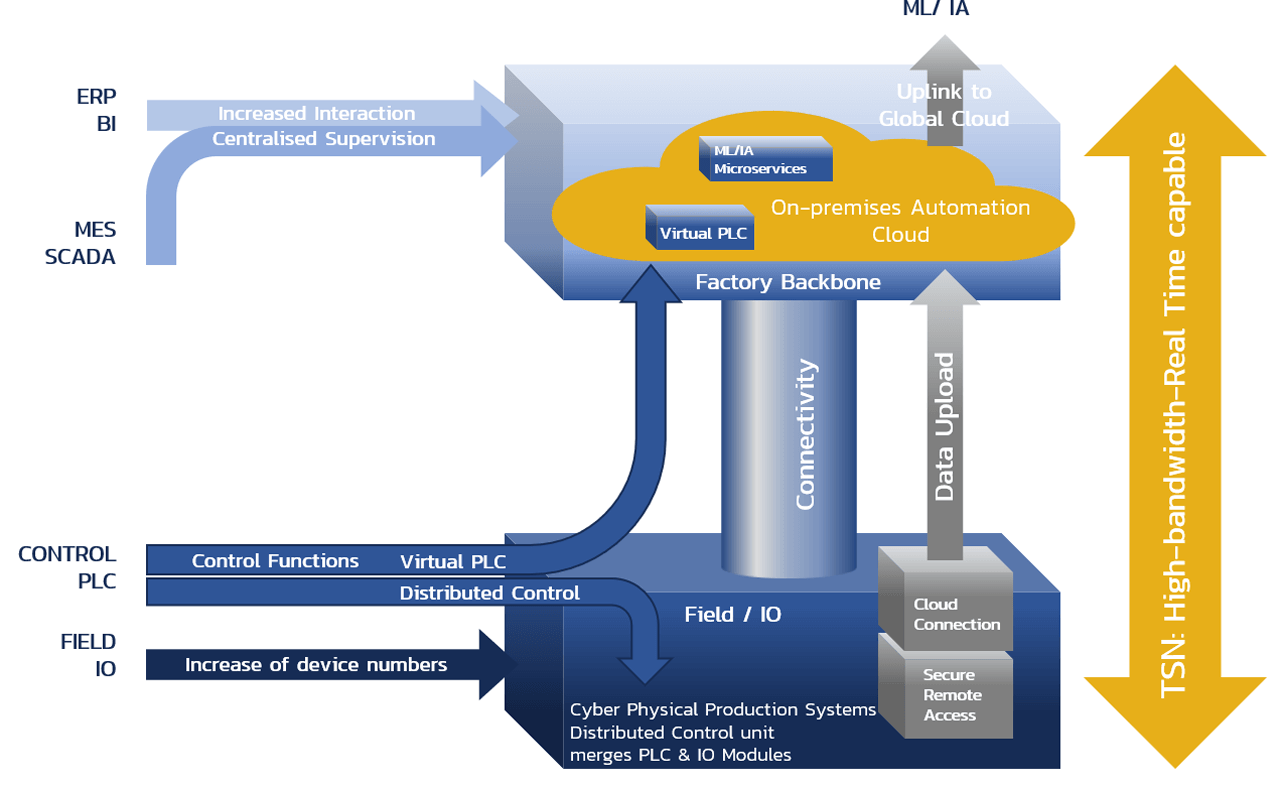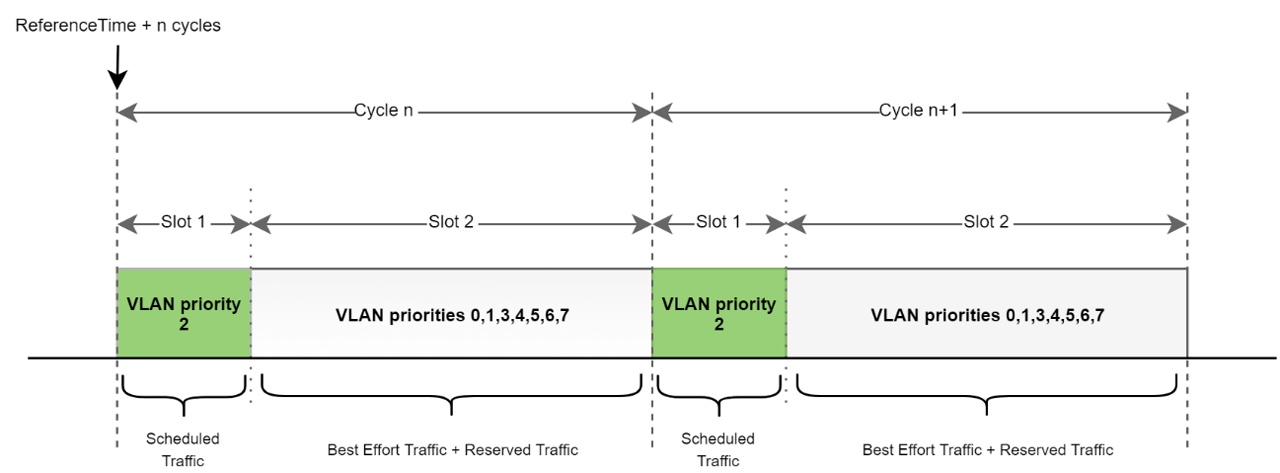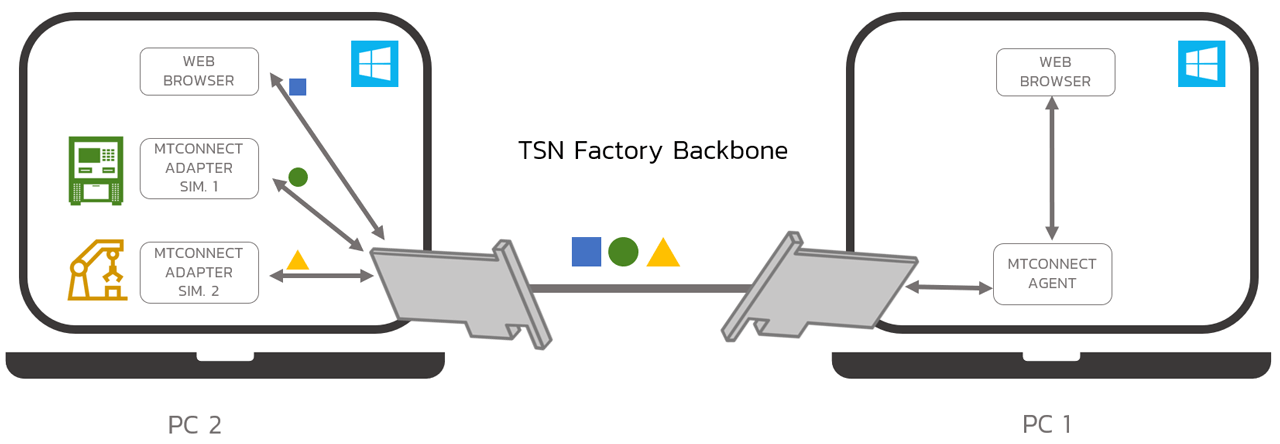TechnologyJuly 27, 2019
Development solution for next generation Ethernet using TSN

Industry 4.0 evolution demands interoperability and simplicity in communications. TSN is new generation Ethernet designed expressly to meet those requirements. A NIC card and evaluation kit are a way to get started that will simplify the network infrastructure and enable the coexistence of OT and IT.
The digital factory demands interoperability and simplicity in communications. TSN is the new generation Ethernet designed expressly to meet those requirements. Although the introduction of TSN will be progressive depending on the sector, some critical ones like railway or aerospace, are adopting TSN as the standard IT/OT network in their new platforms.
One option for development is to use an intelligent TSN NIC card to embed all the complexity required to connect a standard PC to a TSN network without the need of installing any special software on the host. This approach enables the use of typical Industrial applications and software under TSN, such as SCADA, MES, OP (UA), MTConnect.
The final goal?
In the automation and digitalization of industry, stage that was labelled as Industry 3.0, a pyramidal topology of interconnection between the production and management means was defined.
At the base, the productive means, usually controlled by PLCs defining the input and output logic, are located. At a higher level, receiving information from these media, the SCADA and the industrial MES production management software are situated. At the highest point of the pyramid, the ERP-type global resource management software plans the overall business operative.
The evolution of the digitalization process, based on the massive use of the “data”, aims to obtain greater productivity thanks to a thorough knowledge of the product and production. The globalization of this digitalization in the industry is forcing the interconnection of operating networks (Operational Technologies-OT) and data networks (Information Technologies-IT) through gateway technologies. The technologies deployed in both worlds, OT and IT, have been typically quite different and generally not interoperable. This mismatching has generated the emergence of a plethora of heterogeneous equipment confirming an area called brownfield.
The OT/IT integration roadmap does not end in this intermediate situation. Instead, it raises the adoption of a communication technology at the link level that is valid for both worlds. In this way, it would be feasible an all-to-all data exchange topology in a homogeneous plant, similar to a pillar. At the base of this pillar, next to the productive means, a Distributed control-based structure is placed. These are input and output elements with a certain level of intelligence and communication capacity. This structure, called Field I/O, interfaces with powerful computing and communication Edge Computing equipment and with local servers. This combination builds the Local Cloud.
In this Pillar context, the traditional layer-based communication and cybersecurity scheme is no longer valid. The elements included in the Field I/O would communicate directly with applications and services enabled in remote Cloud.

The Pillar in Industry 4.0.
Introduction to TSN
Since 1983 where the solution for local computer networks was standardized as Ethernet, it has evolved from the technical and application point of view. Although its original use was oriented to networks of local computers, Ethernet has been extended to many other sectors. In fact, it has become the de-facto standard for field buses. It stands out for its massive application in the Industry (Profinet, Ethernet IP, EtherCAT, Sercos III, etc.), Electric Sector (high-availability Ethernet for IEC 61850) or Automotive.
The diverse proprietary solutions based on Ethernet that have emerged in the past have solved one of the key shortcomings of Ethernet in its original version: the lack of real-time communication support. Thanks to the application of these proprietary solutions, the need for deterministic behaviours in OT has been covered. However, the lack of interpretability among the solutions of different manufacturers has limited the capacity of the end-user to evolve freely towards a unique infrastructure for computing and networking.
Therefore, in the aforementioned sectors, vendor-independent standardized technical solutions with ensured long lifetimes in the market are demanded. The development of technologies covering these demands would provide a significant reduction in the cost of equipment and in maintenance effort. Additionally, the integration effort of data analysis services and industrial software like Machine Learning, MES or ERP would be drastically simplified.
In this sense, the set of IEEE standards defined by the Time-Sensitive Networking Task Group offers deterministic communication services on IEEE 802. This set of standards is commercially known as Time-Sensitive Networking (TSN). TSN is a comprehensive proposal for a single Ethernet-based solution. The original AVB working group has been renamed IEEE TSN Task Group, which is in charge of the development of all standards related to TSN.

Time-Aware Shaper
The fundamental basis on which TSN is based is the so-called Time-Aware Shaper. This mechanism has been designed to separate the communication in the Ethernet network in repetitive cycles of fixed duration. These cycles are divided into temporary windows according to the TSN configuration agreed by the nodes that compose the network. It is possible to configure and assign to each time window one or more Ethernet priorities of the eight available. The details of the operation of the Time-Aware Shaper are defined in the IEEE 802.1Qbv standard.
Taking into account this discrimination capacity, three fundamental types of traffic are defined: Scheduled traffic, Best-effort traffic and Reserved traffic. Scheduled traffic is appropriate for messages with strict real-time requirements, while Best-effort traffic is made up of general-purpose messages that do not require Quality-of-Service functionalities in addition to standard Ethernet. Messages assigned to different time windows with a reservation of bandwidth set for each priority type are considered Reserved traffic. This specific bandwidth reservation capacity is very useful for information with soft real-time requirements, such as video streams.
With a basic temporal diagram of TSN communication, each cycle is composed of two Slots. The Scheduled traffic is assigned to the first one, while the Best-effort traffic and the Reserved traffic coexist in the second one. Typical configurations require eight Slots per cycle what offers versatility enough for the definition of detailed QoS parameters for each data stream.
The Time-Aware Shaper allows the user to define the number of temporary windows present in each cycle, their duration and the type of traffic that can be transmitted. Thanks to this mode of operation, Scheduled traffic has dedicated windows to guarantee the deterministic behaviour of the communication of the real-time messages. Best-effort traffic is accommodated in the rest of the temporary windows of each operation cycle. One of the most important improvements in prioritizing and optimizing the use of bandwidth in TSN is the use of the Credit Based Shaper, as specified in IEEE 802.1Qav .
This functionality enables the management of Reserved traffic, which increases the priority of the designated traffic, making it a higher priority than Best-effort traffic and of lower priority compared to Scheduled traffic. The challenge of providing temporary synchronization in the nanosecond range between all the devices that make up the TSN network is addressed through the use of the IEEE 1588 synchronization protocol. Thanks to the precision provided by this technology, it is possible to control the delay introduced through the network and to have a deterministic Ethernet solution based on temporary events. The specific IEEE 1588 profile used in TSN is the IEEE 1588ASrev.

Distribution in time windows (Slots) according to the type of TSN traffic.
How can I start to evolve?
In order to facilitate access to this technology and to allow seamless TSN connectivity to legacy PC systems, RELYUM has developed a TSN NIC card pluggable in any Windows or Linux PC. This board embodies all the technical complexity of this communication by offering a standard network interface for communication on the PC.
This card integrates a 4-port SoC-e TSN Bridge. SoC-e has developed TSN technology for the new generation of FPGAs and reconfigurable SoCs. Also, SoC-e TSN solution has been embedded in end-equipment for the industrial sector, in TSN testing equipment and in railway systems. This bridge implementation offers 2 external ports that allow attaching copper or fibre optic SFP modules. Additionally, 2 internal ports enable communication with the host (PC, server, IPC, etc.) and with the internal CPU of the card.
This CPU embedded on the board manages the TSN communication and the synchronization. The software running on this board is accessible from any WEB browser running on the host PC. This approach allows configuring and monitoring the status of the Network without the need of running any special software on the PC. RELY-TSN-PCIe supports automatic configuration using YANG models as defined in the standard. However, in order to facilitate the implementation of early pilots, the board allows manual TSN configuration. Traffic priority can be manually assigned to each slot.

RELY-TSN-PCIe test setup.
TSN, applications and OS
Depending on the requirements imposed by each application, it would be necessary to maintain a different level of accuracy in the synchronization of the clock of the host PC. In the same way, the ability to control the determinism in the flow of information between the network and the software could be necessary. For example, a virtual PLC service in charge of a robotic control would require accessing to real-time data (Scheduled Traffic) within the strict time limits set by the control loop data. Nevertheless, a SCADA software is laxer in synchronization requirements demanding in most of the cases a time base in the microseconds range, enough to manage the processes under supervision. Therefore, it is necessary to analyse for each case what technologies should be integrated to meet the requirements and, in turn, not increasing unnecessarily the complexity of the overall solution.
On the one hand, boards can be plugged into Linux OS computers. In these cases, the global synchronization of applications, network and systems is feasible. Additionally, the traffic management and the real-time behavioural provided by some patches are possible at the operating system level. Thus, a large field of experimentation and the capability of global integration of services are opened.
And on the other hand, RELYUM offers support for seamless integration of these cards in equipment bases on different versions of the Windows OS. In these scenarios, the card is seen by the OS as a standard NIC card with multiple VLAN based virtual interfaces. The identification of the traffic that the card must manage, such as Scheduled, Reserved or Best-Effort, is done through the native VLAN markup. The synchronization is transferred to the operating system by means of NTP, widely supported by Windows and which can therefore be used by the applications installed on it transparently. Other alternatives, such as the use of PTP stacks in Windows environments and the integration of real-time middleware, can also be addressed in these projects if required.
Some application examples for these TSN-capable PCs provided with RELY-TSN-PCIe cards are the SCADA applications and machine interconnection. In this sense, MTConnect offers a good way to build multi-vendor set-ups. The MTConnect standard offers a semantic vocabulary for manufacturing teams to provide structured and contextualized data without proprietary format. MTConnect is used by a large number of manufacturers of industrial equipment to facilitate the interconnection of their equipment with the IT structure. To do this, they offer the software adapter modules called Adapters that work on their equipment. The MTConnect technology groups the information received from the adapters through an agent (Agent). The information published by an agent can be processed by IT applications and even be viewed directly through a Web browser (Browser).
In a development set-up, the PC1 computer hosts the MTConnect Agent. This Agent card receives the information sent from the Adapters installed in the PC2 computer through the RELY-TSN-PCIe. The card is responsible for managing the distribution of traffic in the corresponding Slots according to the selected configuration. In order to facilitate the experimentation, the Adapters simulators provided in the GIT of the project can be used in such a way that it is not necessary to have the real machines.
Summary
Industry 4.0 evolution demands interoperability and simplicity in communications. TSN is the new generation Ethernet designed expressly to meet those requirements. The introduction of TSN in each sector and application will be progressive. However, some critical sectors, such as Railway or Aerospace, are showing great interest on TSN.
Technology for evolving towards the next generation communication networks is a solution that best suits many customers’ needs. In this sense, the NIC card and evaluation kit are a way to get started with technology that will simplify the network infrastructure and enable the coexistence of OT and IT.

